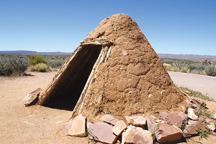
Dear EarthTalk: You hear a lot about electric cars and trucks these days, but has there been any carbon-saving innovation lately in trains and even planes? ~ Michael C., Summit, NJ
Many environmentalists consider travel an environmental “sin” given the carbon emissions generated by the cars, buses, trains and planes we use to get from Point A to B, but it’s up to each of us to determine how much travel is enough. In the meantime, airplane and train manufacturers and the industries that serve them are doing a lot to green their operations and products.
As for airplanes, manufacturers are working hard to replace toxic materials with greener ones. One example is chrome, a carcinogen heavy metal that is used extensively within passenger cabins and elsewhere in many airplanes. Manufacturers have developed 3D printing using carbon fiber compounds to replace chrome and many other metals used throughout a plane’s body. This also cuts down significantly on weight, which in turn saves fuel and emissions.
Fuel substitution is another sustainability fix that airlines are starting to take seriously. One particularly green substitute fuel comes from Fulcrum BioEnergy, which converts garbage into jet fuel that can augment regular carbon-intensive jet fuel and thus save on emissions. The company’s technology utilizes chemical breakdowns of waste to produce fuels that mix with normal jet fuel, cutting emissions by as much as 20 percent.

Not surprisingly, electric drive planes are also on the horizon. Israel’s Eviation has a zero-emission prototype plane that can fly up to an hour after charging for 30 minutes.
Rail companies are pursuing similar strategies, such as electric powered trains. Gravity powered trains use gravitational force—generated by braking (like hybrid electric cars)—to power their batteries. Train builders are also starting to embrace electric drive systems to save on fossil fuel consumption. These newer hybrid systems can cut emissions and fuel usage by up to 11 percent, which amounts to an average fuel savings of some 6,000 gallons of diesel per trip.
Of course, it is important to understand that travel is often a luxury. And while it can be an essential—such as seeing far-flung relatives or participating in work trips—it can often be minimized. To minimize your carbon footprint and—more important—minimize damage to our imperiled planet, consider reducing your plane travel. While both forms of transit are problematic, trains are a better choice for the planet.
The growth of the transit industry and a globalized economy mean that travel is inevitable as a habit, necessity and pastime. Nevertheless, it’s important not to take plane and train travel for granted. The less you travel, the lower your carbon footprint will remain, so it’s up to you to find the right balance between maintaining your quality of life and helping fight global warming. Maybe in the future we can travel great distances without any environmental guilt. But until then, it’s better to think twice about taking any trips that aren’t absolutely necessary.
CONTACTS: freightwaves.com/news/5-rail-sustainability-trends-for-2021; cen.acs.org/environment/sustainability/Airlines-want-make-flight-sustainable/99/i32#the-search-for-greener-airplane-materials
Dear EarthTalk: Why is lithium mining so bad for the environment? ~ Jane B., Atlanta, GA
Lithium is called “white gold” for good reason: the metal’s value has been growing exponentially over the last several years, in large part because it is an essential component of lithium-ion batteries, themselves indispensable in several key sustainable technologies where energy storage is of utmost importance. As electric cars, wind and solar power have grown into major players in the energy industry, lithium has become key to engineering a future free of fossil fuels.
But acquiring lithium comes at an enormous cost. As with most metals, its mining is destructive. It often works like this: Briny water, containing lithium as well as salts and other metals, is pumped to the surface from underground aquifers and mixed with freshwater. The concoction then sits in pools to allow the water to evaporate, leaving the rest of its contents behind as brightly-colored toxic sludge. Refineries use heat and chemical reactions to extract the lithium from that, refining it into powder which is then packaged and shipped to buyers around the world. The remaining wastewater is pumped to pools, where it can sit indefinitely. Any accident that releases mine contents into surrounding communities or the groundwater supply could have devastating long-term impacts.

How much environmental degradation can be tolerated locally in the name of conservation globally has led to debates in places as far-flung as Chile, Serbia and Arizona. Indigenous communities often bear the brunt of the damage, and political leaders have typically given little weight to their concerns. In Arizona, for example, an expanding lithium mine is threatening the Hualapai tribe’s cultural and historic sites. While Hualapai leaders have been fighting to protect their land, Supreme Court precedent dating to the 1820s has left them with little legal leverage to wield against the massive power of the mining industry and federal government. And for politicians who have pledged to work with native peoples to confront climate change, mining lithium and other precious metals is bringing priorities into conflict: How do you ensure the availability of materials essential to the future of renewables while protecting tribal rights?
The U.S. currently produces just one percent of the global lithium supply, according to The Wall Street Journal. But as the Biden administration moves to boost production of electric vehicles and challenge China’s market domination, mining of the metal is expected to increase dramatically in coming years. Over time, experts say, that will reduce fossil fuel emissions by making electric cars more affordable, and therefore more popular. Still, environmental leaders disagree as to whether the benefits of those cuts would outweigh the harm done to the people who rely on the mine-scarred land.
Some new research suggests a slightly more positive future scenario. A 2020 University of Córdoba study in Spain found that the batteries could be recycled and reused, and could even work effectively without cobalt, another metal that requires destructive mining practices. For now, though, lithium mining is poised to grow rapidly to meet soaring demand. As environmentally conscious consumers buy electric cars in ever-greater numbers, it’s important to be aware of the dirty process that powers those clean air vehicles.
CONTACTS: nytimes.com/2021/12/28/climate/chile-constitution-climate-change.html; hcn.org/issues/53.7/indigenous-affairs-mining-for-lithium-at-a-cost-to-indigenous-religions; wsj.com/articles/americas-battery-powered-car-hopes-ride-on-lithium-one-producer-paves-the-way-11615311932; eurekalert.org/news-releases/856097
EarthTalk® is produced by Roddy Scheer & Doug Moss for the 501(c)3 nonprofit EarthTalk.
See more at https://emagazine.com. To donate, visit https//earthtalk.org.
Send questions to: question@earthtalk.org.

